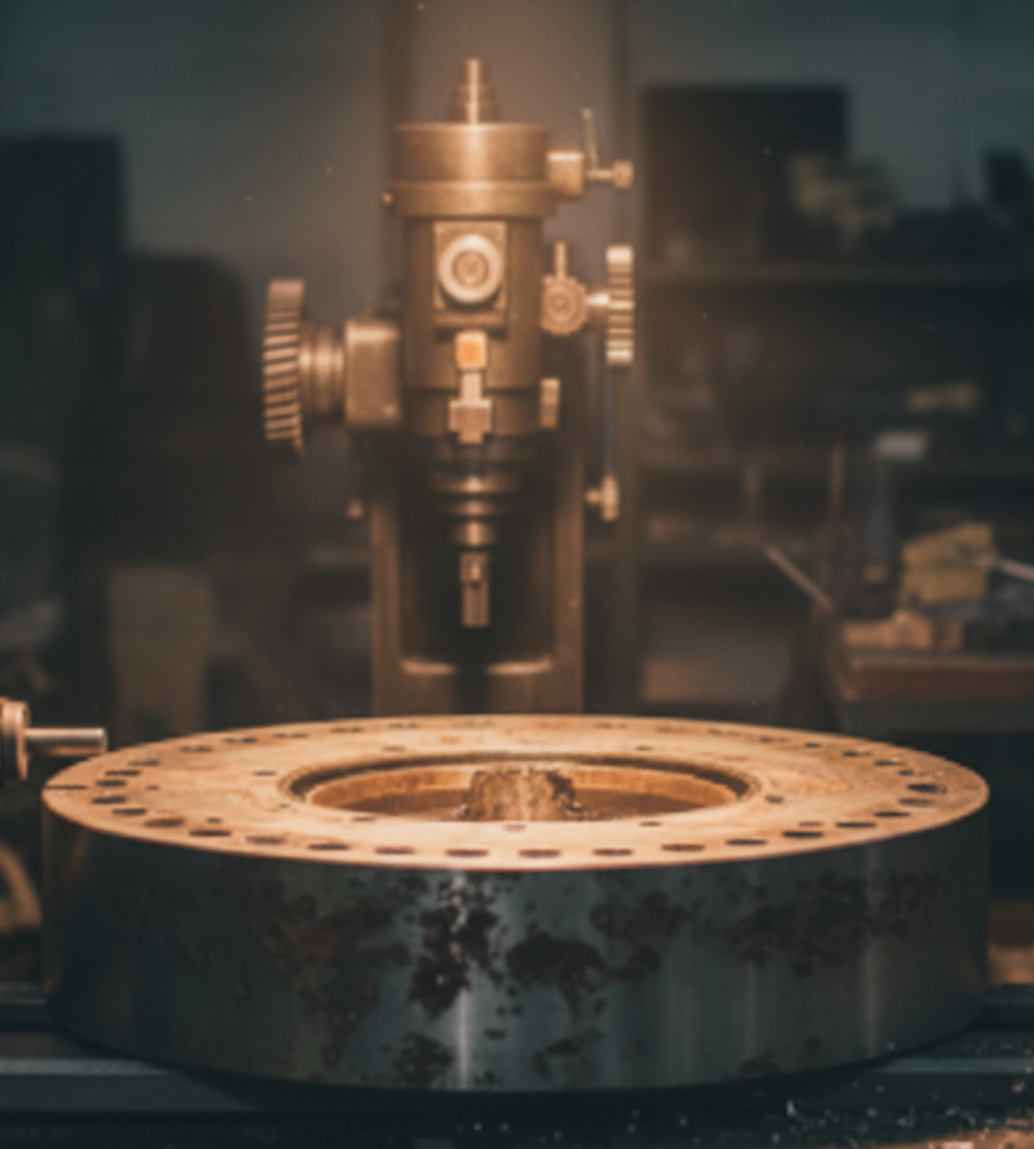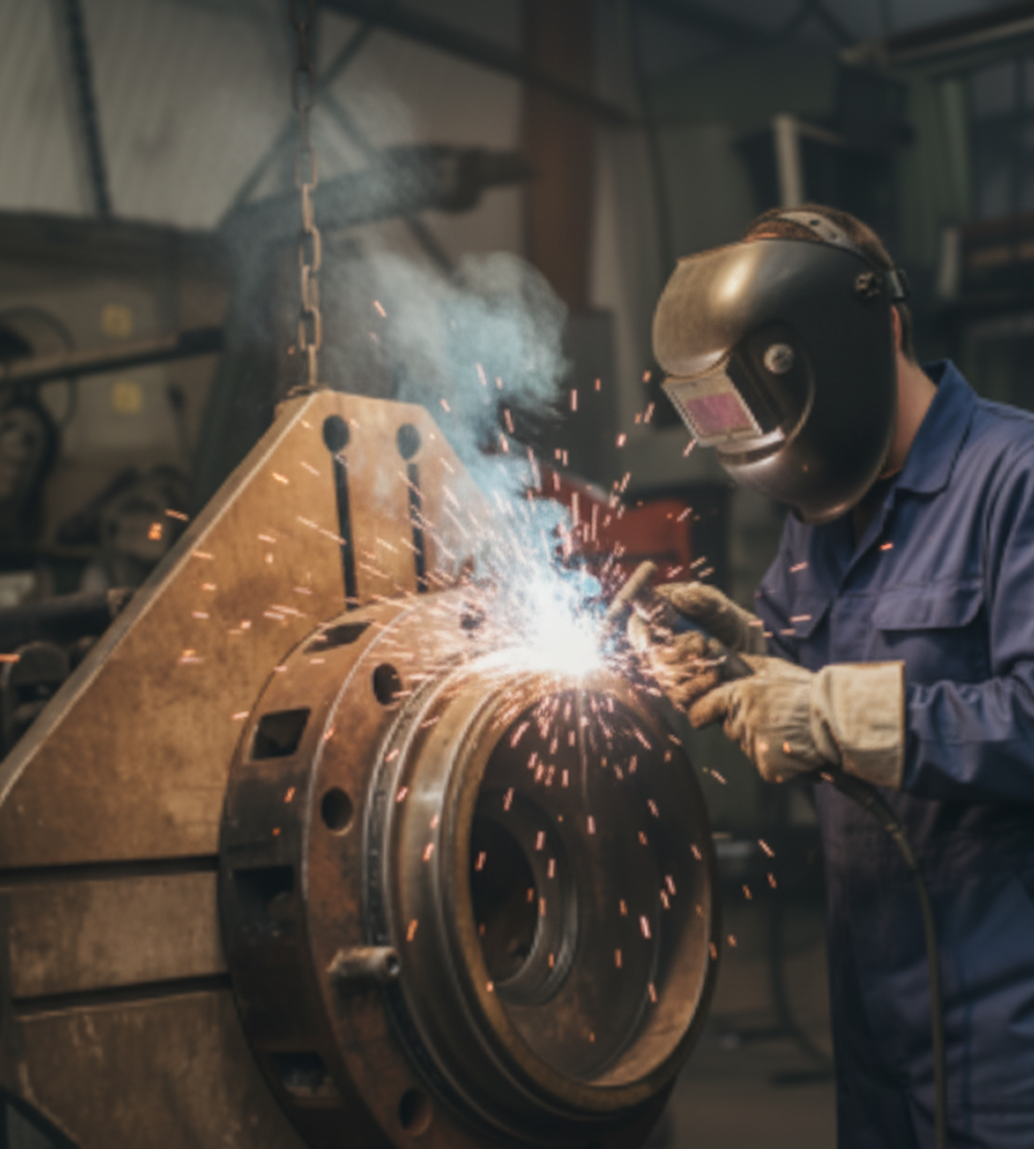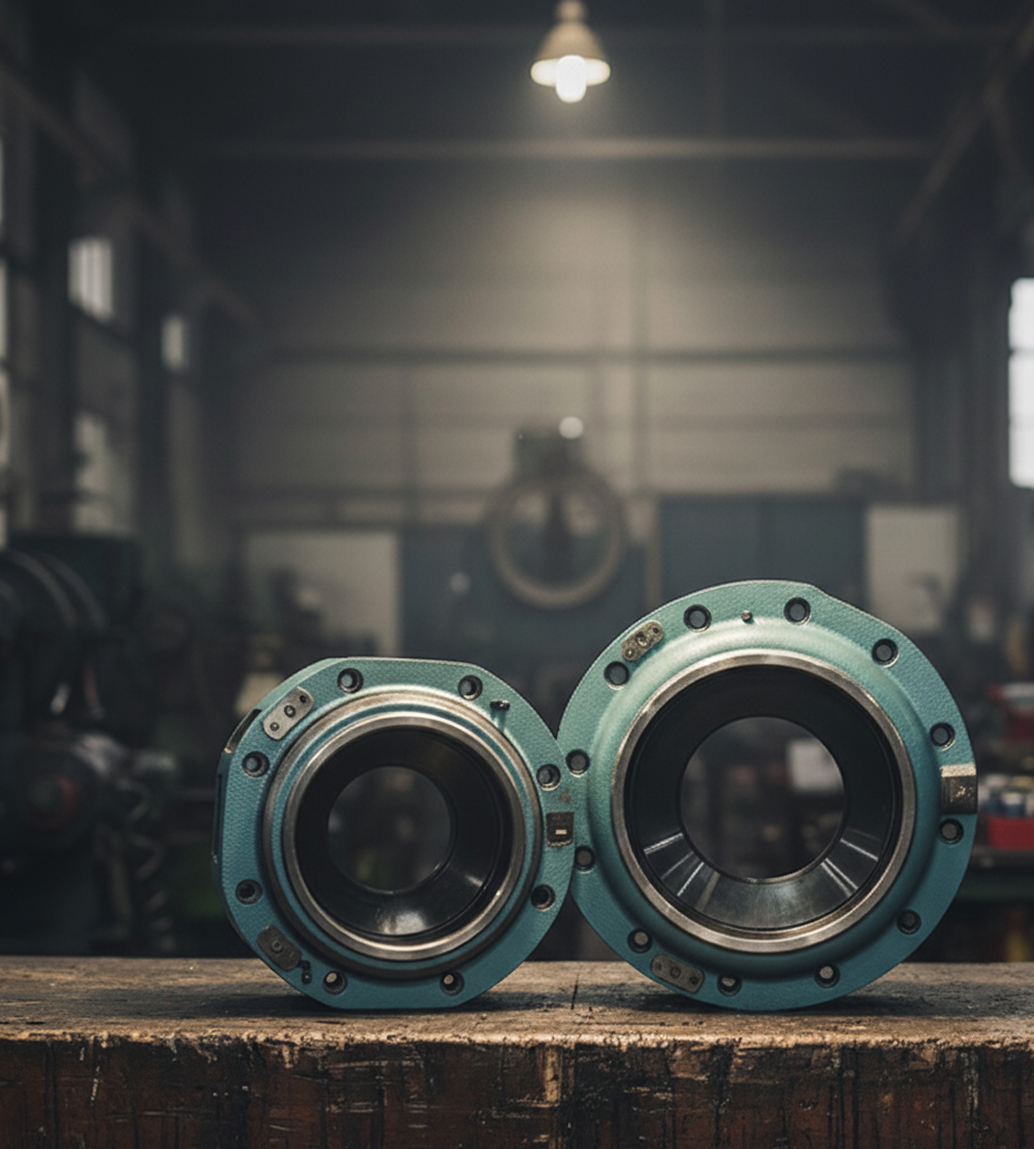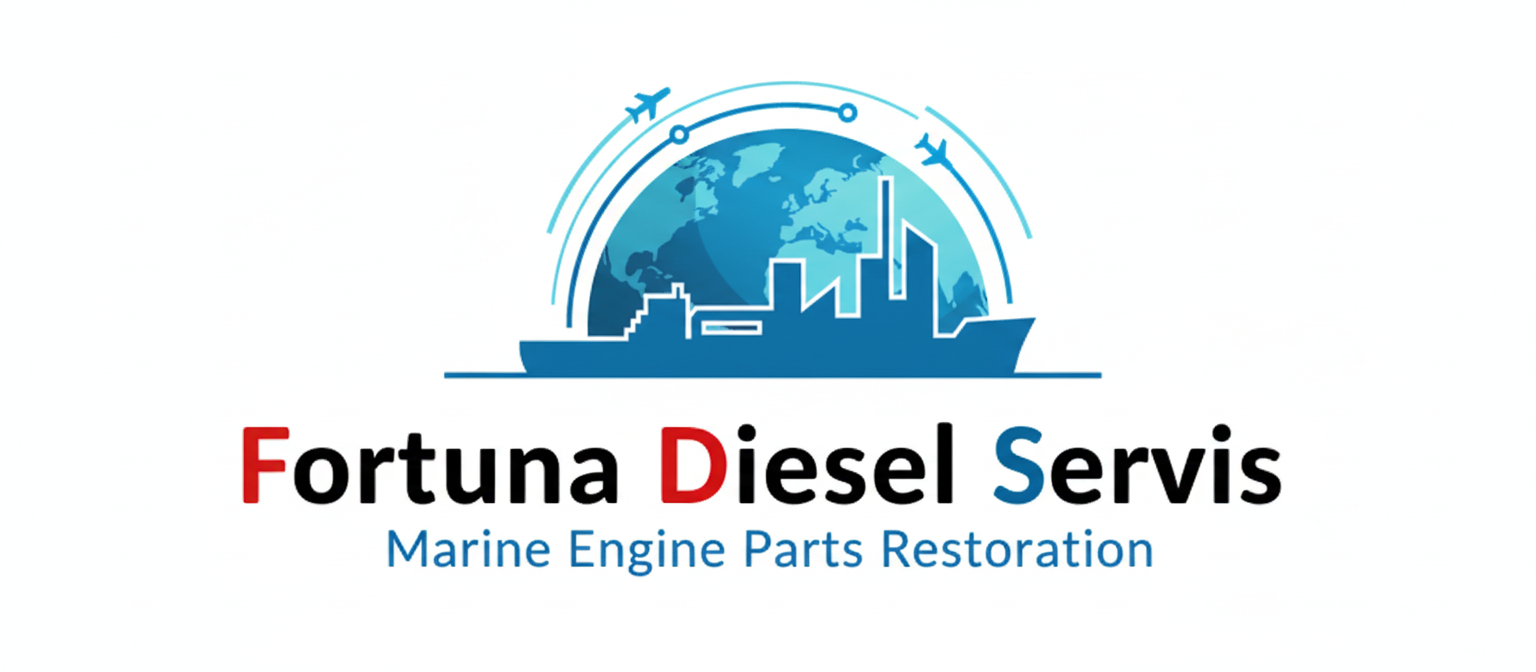Cylinder Cover Restoration for Marine Diesel Engines
We offer professional services for restoring steel cylinder covers of marine diesel engines. Depending on the cover design, we apply one of two proven technological processes, ensuring complete restoration of functionality and extending the service life of the part.

Defect detection and preparation

Welding operations

Final machining
1. Standard Cylinder Cover Restoration Process
This method includes complete replacement or restoration of the combustion chamber and installation of new spacer bushings.
Work stages:
Defect Detection and Preparation:
- Initial cleaning and detailed defect detection of the cover
- Removal of the lower bottom section by gas flame cutting and subsequent machining
Crack Elimination:
- Opening and welding of cracks from the inside of the cover
Welding Preparation:
- Machining of parts for welding preparation
- Surfacing of welding areas and assembly of prepared parts
Main Welding Operations:
- Preheating of the structure
- Root weld welding (manual TIG welding)
- Filling the weld groove (automatic welding)
Spacer Replacement:
- Manufacturing and installation of new spacer bushings with subsequent welding at the base
Quality Control:
- Final machining
- Hydraulic pressure testing
- Preservation of the finished product
2. Process for Covers with Drilled Cooling Channels
For covers with complex design featuring two shells and a single cooling cavity, the following restoration scheme is applied.
Work stages:
Shell Replacement:
- Complete replacement of old shells with new ones made from corrosion-resistant steel
Water Cavity Repair:
- Thorough cleaning of water passage channels
- Corrosion removal and welding of local cracks inside the water cavity
Geometry Restoration:
- Restoration of seating and mounting flanges of the cover to factory dimensions
Final Testing:
- Hydraulic testing
- Geometric dimension control
- Preservation
Why Choose Restoration?
Cylinder cover restoration is a cost-effective alternative to purchasing new parts, significantly reducing repair costs without compromising reliability and quality.
